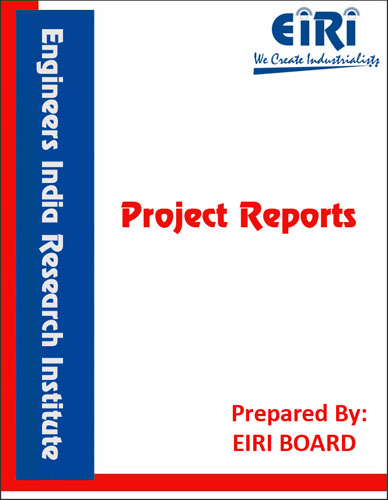SURGICAL AND EXAMINATION HAND GLOVES (STERILE AND NON STERILE) (CAPACITY 10,00,000 PAIR/ANNUM)
The project report includes Present Market Position and Expected Future Demand, Market Size, Statistics, Trends, SWOT Analysis and Forecasts. Report provides a comprehensive analysis from industry covering detailed reporting and evaluates the position of the industry by providing insights to the SWOT analysis of the industry.
We can prepare PROJECT REPORT as per your INVESTMENT PLAN for BANK LOAN REQUIREMENT and INDUSTRY ANALYSIS. All reports are prepared by highly qualified consultants and verified by a panel of experts.
Have Query? Click Here to Chat
Industry Expert is Online, Chat with him for more detail.

Medical gloves are disposable gloves used during medical examinations and procedures that help prevent cross-contamination between caregivers and patients. Medical gloves are made of different polymers including latex, nitrile rubber, vinyl and neoprene; they come unpowdered, or powdered with cornstarch to lubricate the gloves, making them easier to put on the hands Cornstarch replaced tissue-irritating Lycopodium powder and talc, but even cornstarch can impede healing if it gets into tissues (as during surgery). As such, unpowdered gloves are used more often during surgery and other sensitive procedures. Special manufacturing processes are used to compensate for the lack of powder. There are two main types of medical gloves: examination and surgical. Surgical gloves have more precise sizing with a better precision and sensitivity and are made to a higher standard. Examination gloves are available as either sterile or non-sterile, while surgical gloves are generally sterile.
Due to the increasing rate of latex allergy among health professionals, and in the general population, gloves made of non-latex materials such as vinyl, nitrile rubber, or neoprene have become widely used. Chemical processes may be employed to reduce the amount of antigenic protein in Hevea latex, resulting in alternative natural-rubber-based materials such Vytex Natural Rubber Latex. However, non-latex gloves have not yet replaced latex gloves in surgical procedures, as gloves made of alternative materials generally do not fully match the fine control or greater sensitivity to touch available with latex surgical gloves. (High-grade isoprene gloves are the only exception to this rule, as they have the same chemical structure as natural latex rubber. However, fully artificial polyisoprene—rather than “hypoallergenic” cleaned natural latex rubber—is also the most expensive natural latex substitute available. Other high-grade non-latex gloves, such as nitrile gloves, can cost over twice the price of their latex counterparts, a fact that has often prevented switching to these alternative materials in cost-sensitive environments, such as many hospitals.Nitrile is a synthetic rubber. It has no latex protein content and is more resistant to tearing. Also it is very resistant to many chemicals and is very safe for people who are allergic to latex protein. Nitrile gloves are the most durable type of disposable gloves Although nitrile gloves are known for their durability, extra care should be taken while handling silver and other highly reactive metals because those substances can react with sulfur, an accelerant in nitrile gloves.
Powder-free medical gloves are used in medical cleanroom environments, where the need for cleanliness is often similar to that in a sensitive medical environment.
Double gloving
Double gloving is the practice of wearing two layers of medical gloves to reduce the danger of infection from glove failure or penetration of the gloves by sharp objects during medical procedures. A systematic review of the literature has shown double gloving to offer significantly more protection against inner glove perforation in surgical procedures compared to the use of a single glove layer.
In the light of the remarkable performance of the latex products sector. It is no wonder that the sector has now attracted a greater share of the interest in manufacturing. However the smallness of domestic market will have to be realized and new entrepreneur will have to look towards international demand. The consumption of NR latex is increasing continuously in world since 1980. Some of the latex product like surgical gloves are likely to have very high demand.
PRODUCT INTRODUCTION
USES AND APPLICATION
PROPERTIES AND CHARACTERISTICS OF SURGICAL AND EXAMINATION GLOVES
SIZES AND SPECIFICATION OF SURGICAL AND EXAMINATION GLOVES
SPECIFICATION OF DISPOSABLE SURGICAL RUBBER GLOVES
MARKET SURVEY
MARKET SURVEY (GLOBAL)
Potential Consumers
IMPORT OF SURGICAL GLOVES SURGICAL GLOVES IMPORT DATA
INSTALLED CAPACITY, UTILIZATION & PRODUCTION OF SURGICAL GLOVES
APPARENT CONSUMPTION OF SURGICAL GLOVES
ESTIMATED DEMAND
DEMAND SUPPLY GAP
PRESENT MANUFACTURERS OF SURGICAL AND EXAMINATION GLOVES (STERILE & NON STERILE)
ROLE OF ACCELERATORS IN GLOVES MAKING
TECHNOLOGY AND PRODUCTION PROCESS FOR SURGICAL GLOVES
POWDERED / POWDER FREE GLOVES: COMPARISON OF MANUFACTURING PROCESSES
POWDERED GLOVES
FORMULATION OF EXAMINATION GLOVES
PROCESSING METHOD OF SURGICAL GLOVES
MANUFACTURING PROCESS OF SURGICAL GLOVES
FORMULATION OF SURGICAL GLOVES
MANUFACTURING PROCESS OF SURGICAL GLOVES (STERILE)
PROCESS FLOW DIAGRAM
PROCESS FLOW FOR MANUFACTURE OF NON-STERILE SURGICAL GLOVES
MANUFACTURING PROCESS OF NEOPRENE BASED GLOVES
PLANT LAYOUT
PRINCIPLES OF PLANT LAYOUT
PLANT LOCATION FACTORS
EXPLANATION OF TERMS USED IN THE PROJECT REPORT
PROJECT IMPLEMENTATION SCHEDULES
SUPPLIERS OF RAW MATERIALS
SUPPLIERS OF PLANT AND MACHINERY
GLOBAL PLANT & MACHINERIES SUPPLIERS
SUPPLIERS OF PLANT & MACHINERIES (IMPORTED)
BUYER’S ADDRESSES FOR SURGICAL GLOVES
APPENDIX – A :
1. COST OF PLANT ECONOMICS
2. LAND & BUILDING
3. PLANT AND MACHINERY
4. FIXED CAPITAL INVESTMENT
5. RAW MATERIAL
6. SALARY AND WAGES
7. UTILITIES AND OVERHEADS
8. TOTAL WORKING CAPITAL
9. COST OF PRODUCTION
10. PROFITABILITY ANALYSIS
11. BREAK EVEN POINT
12. RESOURCES OF FINANCE
13. INTEREST CHART
14. DEPRECIATION CHART
15. CASH FLOW STATEMENT
16. PROJECTED BALANCE SHEET



